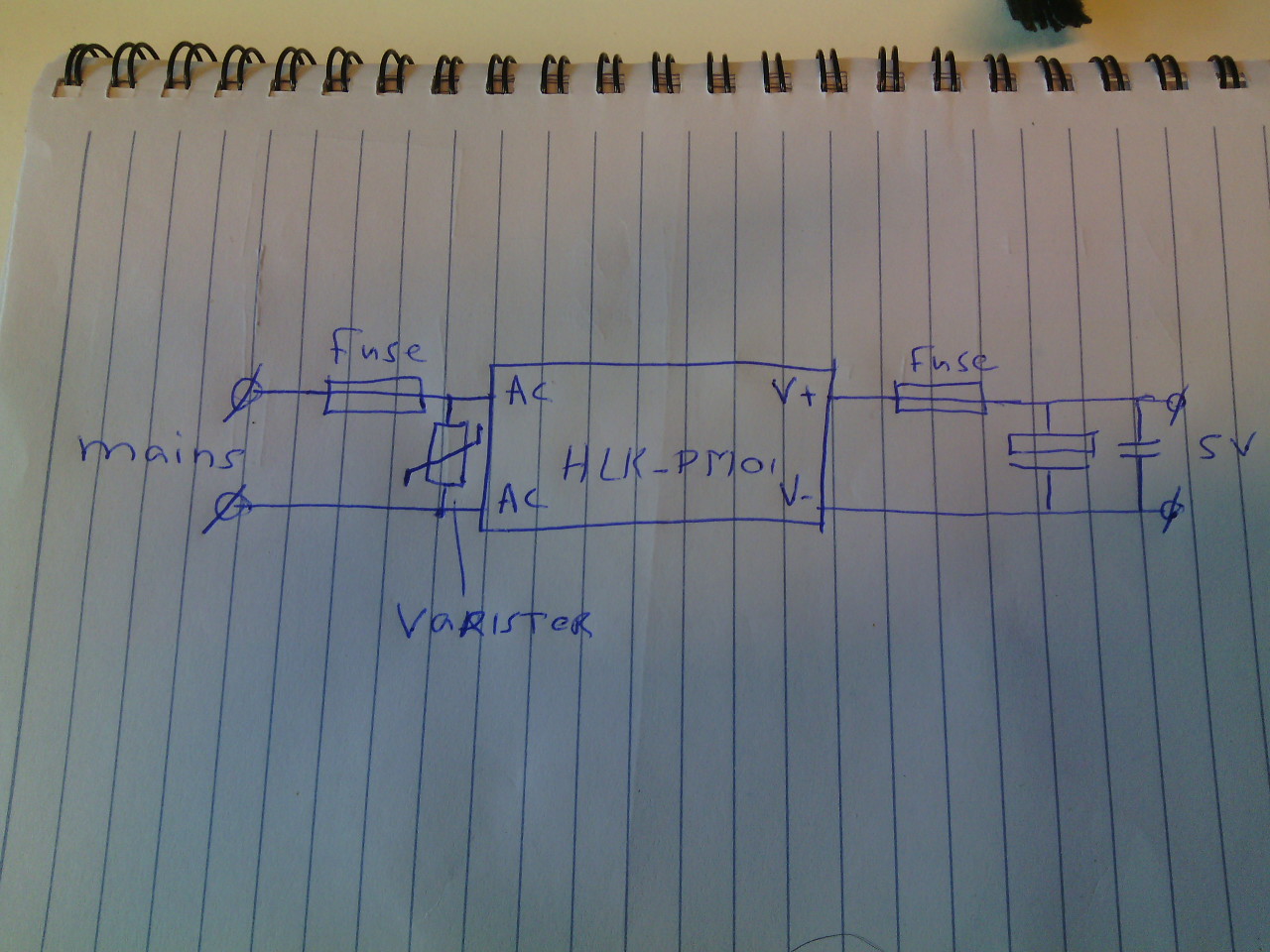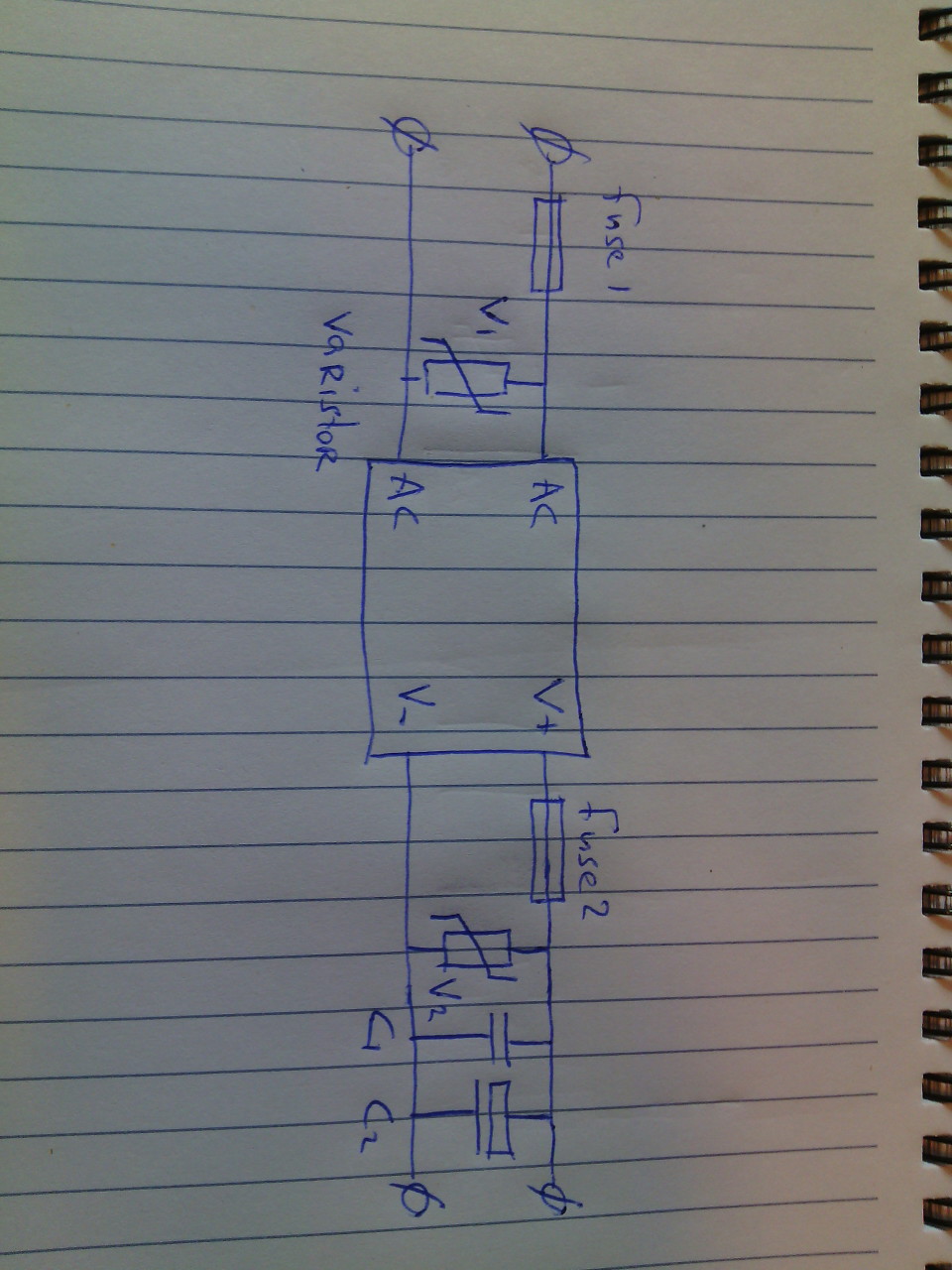Safe In-Wall AC to DC Transformers??
-
The specs of the unit states that it resilient to high voltages. I tested it with 250 VDC across input and output.
As stated before in this threat, the specs are ok, it only lacks the stamps.
From what I have seen so far, the module is good for me.From the specs:
4.Safety Characteristics:
4.1Products designed to meet UL, CE safety certification requirements.
4.2Safety and electromagnetic compatibility
Designed with the input of 0.5A UL certified insurance;
PCB board using double-sided copper clad plate production, material for the 94-V0 fire rating level;
Safety standards: Compliance with UL1012, EN60950, UL60950
Insulation voltage: I / P-O / P: 2500VAC
Insulation resistance :I / PO / P> 100M Ohms / 500VDC 25 ℃ 70% RH
Conduction and radiation :comply with EN55011, EN55022 (CISPR22)
Electrostatic discharge :IEC / EN 61000-4-2 level 4 8kV / 15kV
RF radiation Immunity: IEC / EN 61000-4-3 See Application Note
4.3 Temperature safety design
At room temperature,the capacitors of this power , the inner surface of the main converter maximum temperature does not exceed 90 ℃;
Shell maximum surface temperature does not exceed 60 ℃ -
Overall that looks like a pretty good AC/DC trans. The isolation boundary looks massive.
-
From what I researched at internet, the most important safety measure is the isolation part. Most countries have similar standards. From the pictures above I see the PCB tracks from high and low voltage are clearly separated by at least 0.5cm , which I think is also a requirement in EU.
Maybe if we figure out a way to provide something between 7.5Kv and 10Kv into the its AC input for some seconds/minutes, and see what happens. This is the worst-case scenario --- A lightning event into the AC line during a electrical storm.
Despite it may (and will) burn inside completely, any high voltage should never be present at output, as well as no significant flame that may propagate fire should occur.
This of course requires costly and sofisticated lab equipment.
@rvendrame @Bertb this guy detail his methods here http://lygte-info.dk/info/usbPowerSupplyTestHow UK.html
he has some kind of gadget that produce 2500v to 5000v.
Anyway, I am convinced that this is safe (or at least MUCH safer then what people here have been using). If one of the electrical wizards can detail the circuit with extra fuses, diodes and varistor (what is that???) I think it can help us all.
-
@Moshe Livne, yes I think I saw that website. The list of equipment there is surely respectable, at least. I just wrote to the info@ there, asking if perhaps he would like to test one of this HLK PSU. I can send one or two of my lot, lets see if we get some reply.
The varistor is a device widely used for protection. It is connected in parallel with the AC mains. It will short the circuit in case the voltage exceeds its pre-determined value. The ideia is to use it burn an internal fuse, or trigger the house circuit breaker in case of over voltage. A 20K-250V varistor will short the circuit if voltage is above 250V, and it supports voltages up to 20KV without produce any flame.
Using a varistor in conjunction with a PTC fuse (a fuse that automatically resets after some time) creates a very good protection for over voltage, with small cost and footprint.
I do agree with @Bertb and @ServiceXp , this HLK PSU looks good and safe for what we intend to use. Surely it is better than a phone charger. But as in any DIY, each one of us must know where to step on, assuming the involved risks.
-
Just to be sure everybody understands the schematic, hereunder a schematic.
I am not a fan of blowing mains fuses ... -
@Bertb The idea was to put it on my desk (with a mains cord soldered to it) running a resistor load, and then shoot some thermal pics of it
. I wasn't planning to touch the unit with my bare hands while it is powered hahaha -
@ThinkPad Well its your desk, so its fine with me.
Is there a way to get your address without shouting it from the rooftops? -
Don't suppose anyone could tell me what components (values) need to be purchased for 230v (UK)? I have bought 10 of these and wish to make them as safe as I can.
-
@Bertb Once again, thank you for all your work with this! I can't wait to start building with this! This will be so helpful to have a safer method instead of just dismantling old phone chargers and rolling the dice.
I couldn't open the schematic. What is the file extension? Also, would you mind posting the required parts for 110v if they are any different than what you will be providing @Atomfire?
Thanks!
Pete
-
Hey guys, I wrote to the owner of the site suggested by @Moshe-Livne. He replied saying that he can test the HLK.
He mentioned that usually he takes at least two units (so if one burn he can continue the testing). I will send one from my lot, perhaps we have a brave guy to gave up one more? (a sacrifice of few to save many ) ;-) Let me know and I will share the address via PM (Denmark).
-
Hey guys, I wrote to the owner of the site suggested by @Moshe-Livne. He replied saying that he can test the HLK.
He mentioned that usually he takes at least two units (so if one burn he can continue the testing). I will send one from my lot, perhaps we have a brave guy to gave up one more? (a sacrifice of few to save many ) ;-) Let me know and I will share the address via PM (Denmark).
@rvendrame Considering cost of postage and logistics involved it would probably be cheapest to just order two units from Ali to him? its 8$ including shipping if i remember correctly
-
@Bertb Once again, thank you for all your work with this! I can't wait to start building with this! This will be so helpful to have a safer method instead of just dismantling old phone chargers and rolling the dice.
I couldn't open the schematic. What is the file extension? Also, would you mind posting the required parts for 110v if they are any different than what you will be providing @Atomfire?
Thanks!
Pete
-
@Bertb I tried adding "html" suffix to it but it didn't work.
-
One option is to click on the link and download the file. After the file is completely downloaded, just add the extention .jpg to it.
The result is as following:

-
Something went wrong with uploading the file, I think.
Herewith a new schematic with a suggested bill of material.
It is highly experimental still, but I ordered the components yesterday.I am specially interested in working with the PTC fuse.
I hope the proposed circuit works for you. Please keep the maximim continuous output power in mind. It is only 3 Watts (600 mA).
In some cases you might need to add C1's (rule of thump 1 per chip or chip VCC) and/or need to increase the value of C2. This depends on the fluctuations in the power demand.With the proposed values for C1 and C2, the ripple remained below 50 mV at 500 mA.
Also keep in mind that a remaining oscillation frequency residue appears in the output of some 60kHz.. If capacitors are not able to filter that out, a small coil might be needed.Well it is experimenting that makes this fun, isn't it?

-
Hey guys, I wrote to the owner of the site suggested by @Moshe-Livne. He replied saying that he can test the HLK.
He mentioned that usually he takes at least two units (so if one burn he can continue the testing). I will send one from my lot, perhaps we have a brave guy to gave up one more? (a sacrifice of few to save many ) ;-) Let me know and I will share the address via PM (Denmark).
@rvendrame said:
Hey guys, I wrote to the owner of the site suggested by @Moshe-Livne. He replied saying that he can test the HLK.
He mentioned that usually he takes at least two units (so if one burn he can continue the testing). I will send one from my lot, perhaps we have a brave guy to gave up one more? (a sacrifice of few to save many ) ;-) Let me know and I will share the address via PM (Denmark).
I am in for this.
